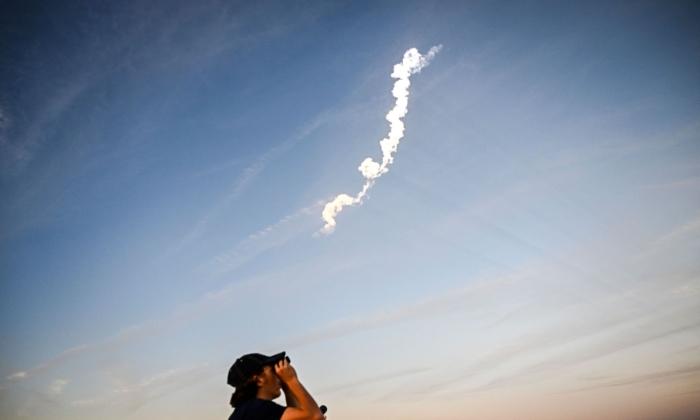Scientists using a low-frequency telescope in Europe observed that SpaceX’s satellites were emitting a radio frequency via their onboard electronics that can interfere with astronomical observations.
According to a study’s press release published in the Astronomy and Astrophysics academic journal, scientists used the LOFAR telescope in the Netherlands to detect any low-frequency radio waves that could interfere with radio astronomy, or in other words, with astronomical observations based on receiving faint radio signals from outer space.
“This study represents the latest effort to better understand satellite constellations’ impact on radio astronomy,” said lead author Federico Di Vruno. “Previous workshops on Dark and Quiet Skies theorized about this radiation, and our observations confirm it is measurable.”
SpaceX, headed by Elon Musk, has launched into orbit more than 2,000 satellites, named Starlink, which are grouped in satellite constellations and travel like train wagons, one behind the other. These satellites are usually used for internet service on Earth.
The study examined 68 Starlink satellites and found that 47 of them emitted low-frequency radiation that can interfere with radio astronomy. A band between 150 MHz and 153 MHz is allocated for radio astronomy by the International Telecommunications Union, but Starlink satellites were emitting inside that range.
However, SpaceX did not violate any applicable regulations, as there are no regulations regarding the radiation emitted by satellites. Also, this emission appeared to be unintentional.
On the contrary, there are strict regulations on the radiation that earth-based systems can emit if this radiation can interfere with radio astronomy.
Starlink satellites are closer to Earth compared to others, at 340 miles, compared to the typical 21,700 miles, so they can interfere with radio frequencies the astronomers receive.
The satellite constellations started appearing in bigger numbers only a few years ago, with a small number, around 15 per constellation.
SpaceX plans to launch thousands more satellites in the coming years. OneWeb has already 600, and Amazon plans to launch thousands more starting in 2024, ScienceAlert reported.
“With LOFAR, we detected radiation between 110 and 188 MHz from 47 out of the 68 satellites that were observed. This frequency range includes a protected band between 150.05 and 153 MHz specifically allocated to radio astronomy by the International Telecommunications Union (ITU),” says co-author Cees Bassa from ASTRON, the Netherlands Institute for Radio Astronomy.
There is also a radiation accumulation effect, according to the study, which concerns the scientists in relation to the future growth of satellite constellations.
Communication With SpaceX
The study authors are in communication with SpaceX, which will try to mitigate the current impact on astronomical observations.The company also said that it has made changes to its design for future satellites, aiming to neutralize the unintended interfering radiation.
SpaceX’s collaboration with astronomers is setting an example, but the participation of other satellite operators is also critical, according to the press release.
Co-author Gyula Józsa said: “We believe that the early recognition of this situation gives astronomy and large constellation operators an opportunity to work together on technical mitigations pro-actively, in parallel to the necessary discussions to develop suitable regulations.”
Starlink has since June a Department of Defense contract to buy those satellite services for Ukraine, the Pentagon said on Thursday.
“We continue to work with a range of global partners to ensure Ukraine has the resilient satellite and communication capabilities they need. Satellite communications constitute a vital layer in Ukraine’s overall communications network and the department contracts with Starlink for services of this type,” the Pentagon said in a statement.
Starlink has been used by Ukrainian troops for a variety of efforts, including battlefield communications.
SpaceX, through private donations and under a separate contract with a U.S. foreign aid agency, has been providing Ukrainians and the country’s military with Starlink internet service since the beginning of the war in 2022.
Mr. Musk said in February that internet access in Ukraine via Starlink would be restricted so that Ukraine cannot use it to command drones, something that could escalate the war and “may lead to WW3,” according to a Twitter post of his.





